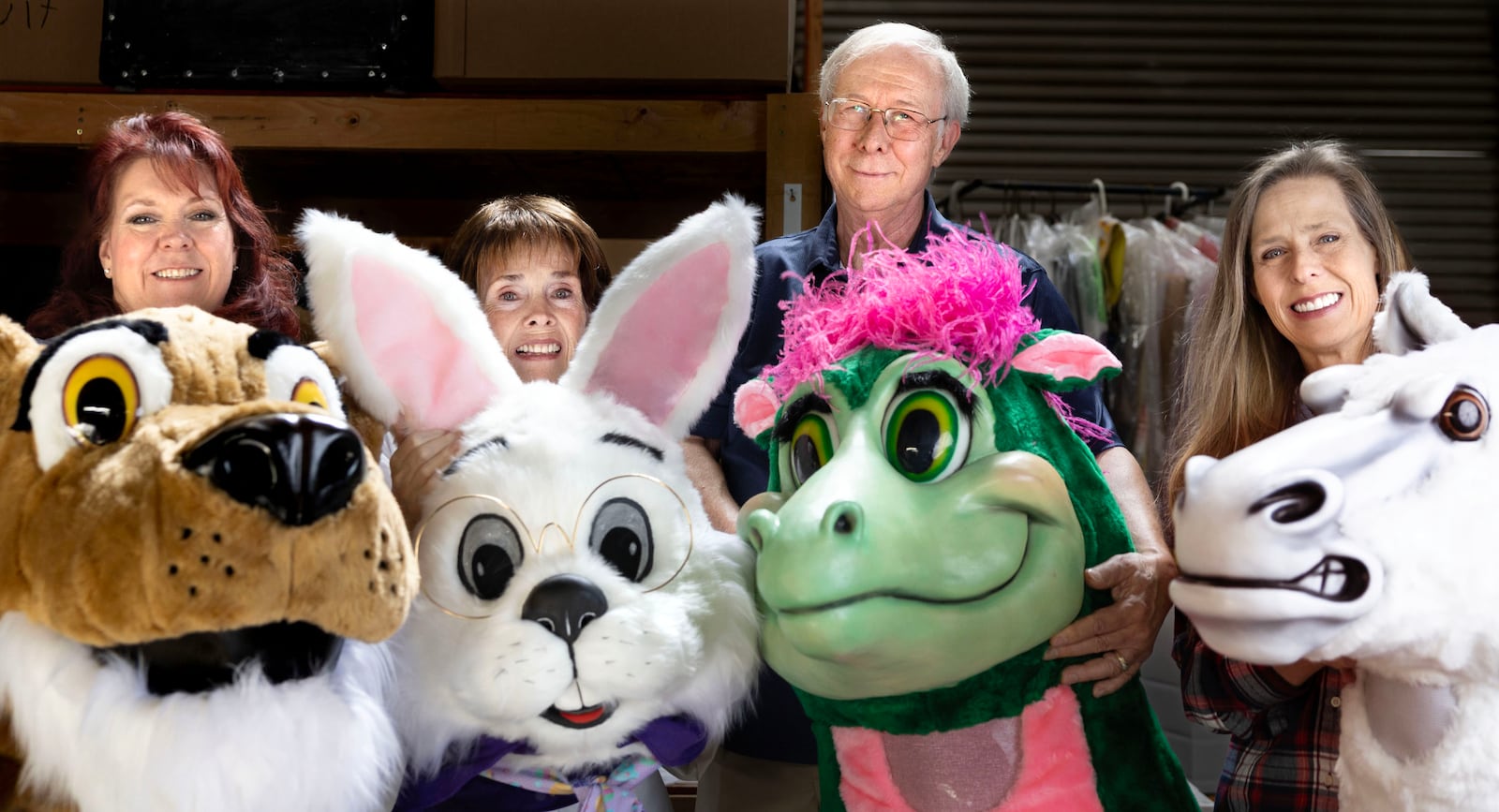This story appears in the October 2025 issue of Utah Business. Subscribe.
It’s hard to imagine sporting events without mascots, but the modern mascots we know today — those high-energy, costumed performers — are relatively recent additions to American sports culture.
Just over 50 years ago, a radio station’s bright and bulky chicken mascot began entertaining San Diego Padres fans with its high-energy, slapstick humor. In 1980, a singing telegram messenger in a gorilla suit inadvertently became the center of attention at a Phoenix Suns game, eventually landing him a full-time job. Unlike the ungainly mascot costumes of the day, a gorilla suit allowed for true athleticism.
“The real turning point came when I got a phone call from the Phoenix Suns,” remembers Terry Allen, founder of Salt Lake City-based Alinco Costumes — which had, since 1977, made gorilla suits and more, selling primarily to costume rental companies. “The original gorilla had quit and left town, taking his suit with him, and they needed a replacement. That was our initial step into the mobile mascot market.”
“Mobile mascot” is the classification applied to costumes expected to perform at a high level of physicality. These costumes are made with more durable, lightweight materials and incorporate elements meant to protect the wearer from injury, all without limiting their ability to see or breathe normally.
“The Seattle SuperSonics saw what we did with the gorilla, and they also wanted a performance-oriented mascot. That’s how their Squatch came to be,” Terry says. “And then, the Utah Jazz called.”
The night the gorilla took flight
While Alinco was making costumes for the Seattle SuperSonics, Utah Jazz, and eventually the Sacramento Kings, all three teams came together in Salt Lake City, where they held joint tryouts to find the right people to perform in them. All candidates wore Alinco’s stock gorilla costumes and shared a single head.
One of them, Jon Absey, was the last contestant to try out.
“I just remember when I put the head on, all the sweat running down my face from everybody who had worn it before me,” Absey says. “But I did the tryout and got a call from all three teams offering me the job. I didn’t call anybody back. Then, [Utah Jazz VP of game operations] Grant Harrison called one more time and said, ‘What are you doing?’ He talked me into coming to Utah.”
Absey spent the next 25 years as the Utah Jazz Bear.
“When the Jazz decided on the guy, I said, ‘I remember him, and we gotta put a helmet in that costume because the things he was doing were dangerous and could get him killed,’” Terry says. “That’s where the idea of putting helmets in costumes came from. These guys will always need more protection than your average stand-on-the-street-corner-and-wave mascot.”
Helmets in mobile mascot heads are a standard feature now, but the Jazz Bear was the first.
“Alinco is the Cadillac of costume makers,” Absey says. “They’re always pushing the limits of mascot ingenuity. For example, they were the ones who figured out how to get rid of fake eyes and instead make costumes where the mask fits your own eyes. It may not seem like a big deal, but doing that opened up so many new opportunities to perform.”
Today, around 50 percent of NBA team mascots are made by Alinco.
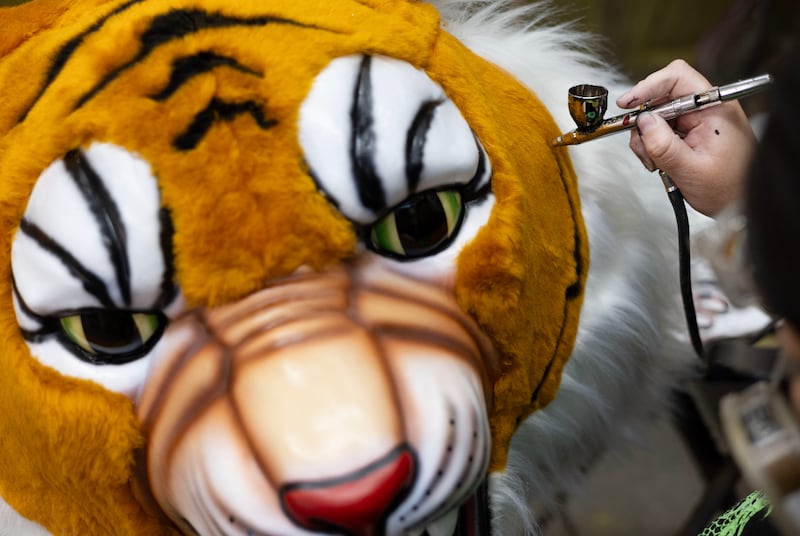
A history older than the state of Utah
Though Alinco was founded in 1977, its full story begins long before. Salt Lake Costume was born in 1889, and in the early 1930s, Terry’s father went to work there. Having learned the business, he launched his own costume company, Intermountain Costume, eventually acquiring Salt Lake Costume.
“If you were a member of the Allen family, you were expected to work in the family business,” Terry says. “I started at a very young age, stacking boxes for 10 cents an hour. Eventually, I progressed to minimum wage, running the shipping department.”
In the 1950s, Salt Lake Costume began making comically oversized heads that were commonly worn in parades. In 1963, at age 16, Terry started making his own parade heads and discovered he had a special talent for it. Eventually, a creative division of Salt Lake Costume was formed called Alinco Display & Associated Arts, specializing in making props for stage productions and parade heads — the latter eventually evolving into the proportionally exaggerated full body costumes of first-generation mascots, including the San Diego Chicken, which Terry helped build.
In 1977, Terry bought the creative division of Salt Lake Costume and renamed it Alinco for Allens Incorporated.
“We thought about going with a name that said more about what we do, but at the time, we had some recognition in the industry as Alinco,” Terry recalls. “I was working with some advertising people to come up with something and they pointed out that, in the beginning, nobody knew what Walt Disney did and things turned out OK for them.”
In 2021, Terry decided to step back from the business and turn it over to his children, leaving his eldest daughter, Jill Palmer, in charge.
“My dad wanted to retire and needed to leave Alinco in somebody’s hands who he knew was gonna push through and take care of his baby,” Palmer says. “He put me in charge of production and my sister Rebecca [Lucy] in charge of the office. Our two brothers are a big help when we need them, too.”
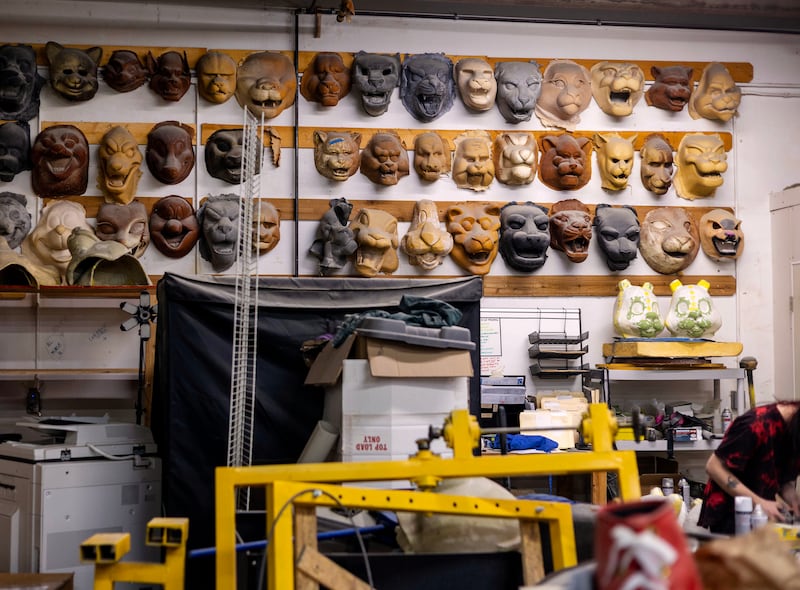
Families that costume together, stay together
Some of both Lucy and Palmer’s core memories are of experiences only the children of a committed mascot maker would have.
“Dad’s such a hard worker,” Lucy says. “They’d get these big orders that had to go out, so they spent entire nights working. My mom would be here, too, so they hauled the whole family down here, with us kids watching cartoons on a little black and white TV until the networks turned off. Then we’d sleep on scraps of fur while they cut their orders and sewed.”
Terry’s wife, Lowla Allen, oversaw client relations. She, too, remembers Alinco’s spare origins fondly.
“We didn’t have money for a big cutting table like we do now. We would buy fabric from the retail stores, roll it out on the cement floor and cut it there,” she says. “We had very, very humble beginnings. But it worked because Terry is quite amazing in his ability to look at something before it’s made and visualize what it’ll look like if you just take a snip here, or a turn there. He doesn’t look like a genius, but I think he is.”
The “Made in China” challenge
Today, one of the biggest challenges confronting Alinco seems to be one common to every industry: keeping production on-shore. At one time, Alinco had three product lines: a lower-end stock product priced at around $100, a high-end stock product priced at around $1,500, and the custom work they’re best known for.
“We used to sell $99 gorillas and Easter bunnies by the hundreds, but we don’t do that anymore because China has come in and really stolen that low end of the market,” Palmer says. “That’s why you see those strip mall party shops everywhere selling low-quality work that only gets worn once. All the wonderful costume shops are dying because their products are being knocked off by the cheap stuff.”
Lucy says the theft of Alinco’s intellectual property by unscrupulous Chinese manufacturers is more than just an economic inconvenience.
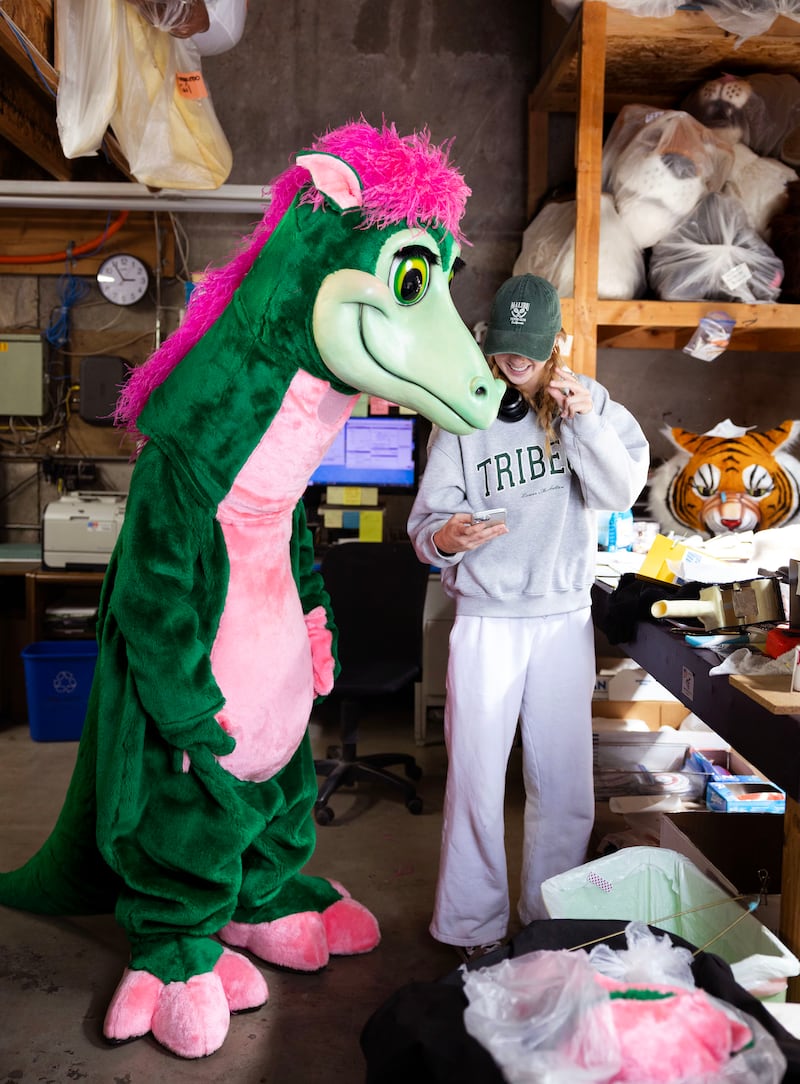
“We’ll have these cute little schools say, ‘We ordered one of your bulldogs and it’s just horrible,’ and I’ll ask for a picture of it, and it’s not ours,” she says. “The knockoffs are using our marketing so people think they’re getting our high-end product for just $300, and we have to tell them they didn’t. Dealing with that is getting harder and harder.”
Ironically, the China problem was instrumental in Alinco becoming what it is today. When Alinco started, Terry says, the original plan was to manufacture Halloween masks. It didn’t take them long to realize they couldn’t compete with China in that market, so they started building custom mascot costumes instead.
Behind the mask, it’s a tough game
Today, Alinco enjoys a dominant position among a small handful of competitors. The challenge of entering the highly specialized custom mascots market keeps the number of participants low. New players tend to be ex-mascots who think they understand the mascot business and open up shop, Palmer says, but they don’t typically last long.
“You’d have to be crazy to open a new mascot studio,” she continues. “It’s just an incredibly hard business to start, and I would not recommend it to anybody who doesn’t already have all the machines and the talent.”
Terry affirms that, though acquisition conversations have occurred, they’ve been short-lived. The Allens view their company in every way like a child they’ve nurtured whose well-being will not be entrusted to anything but a perfect match.
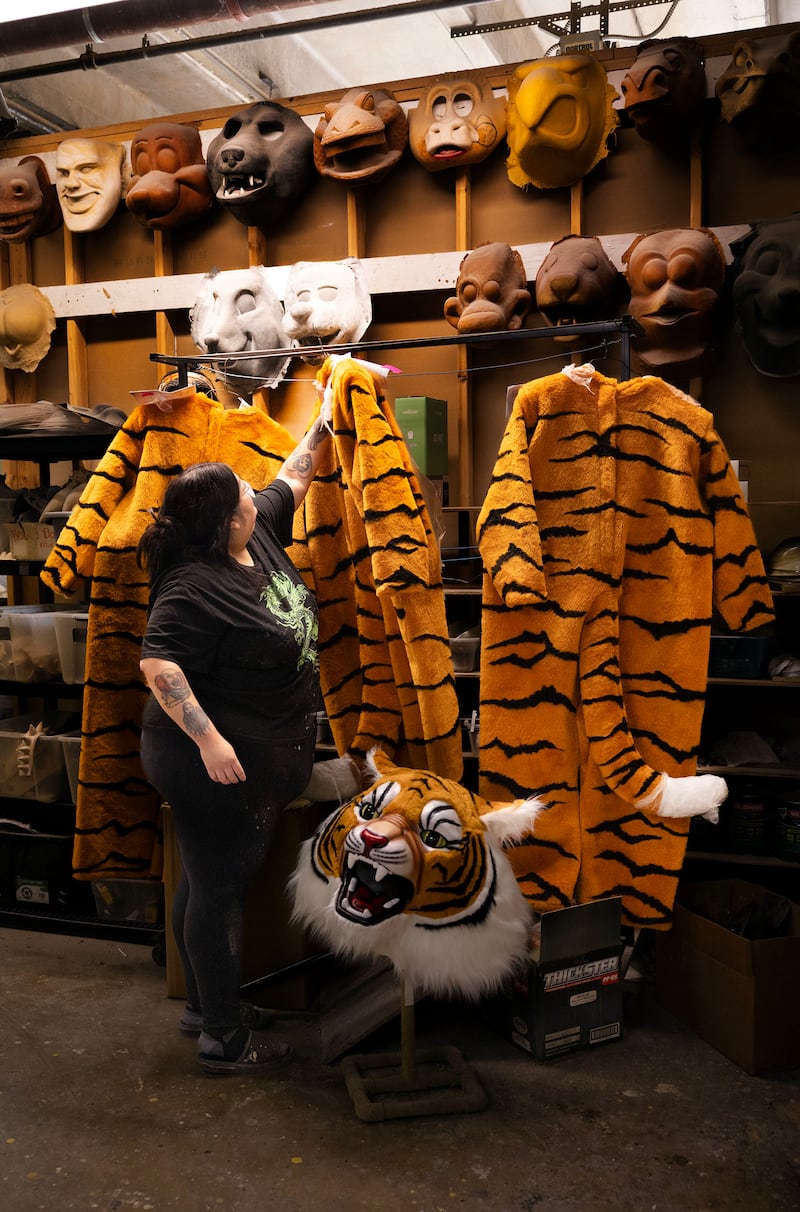
“You spend your life doing something, taking pride in it … you don’t want to see somebody try and take it just for the easy buck,” Terry says.
Terry sees a bright future for his industry, and Alinco in particular, given the way brands are increasingly relying on mascots to help provide differentiation in crowded marketplaces. And not just brands, but amusement parks, advertising agencies, performers — the list goes on and on.
“Every kind of entity you can think of — even charities — want mascots,” Terry says. “Bringing them to life is what Alinco does.”

